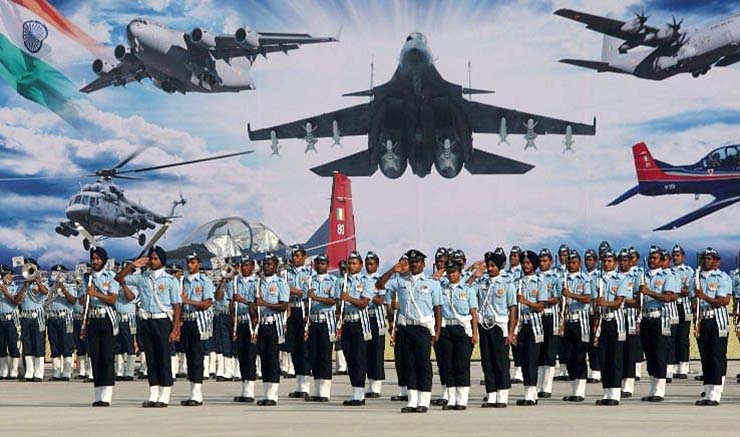
New Delhi: With Network Centric Warfare being now fundamental to IAF’s power projection, with Offensive and Air Defence Operations being conducted synergistically through an Integrated Air Command and Control System, the revised IAF Doctrine brings together aerospace power knowledge and experience to provide a basis for understanding the utility of the aerospace domain and assets.
The first doctrine was published in 1995 and revised in 2007 and revised and unclassified in 2012.
However the current one released on February 4 highlights the characteristics of aerospace power and explores their interdependence with other elements of national and military power. This edition of the Doctrine focuses on the aspects that would provide guidance in Peace, War and No War No Peace situations to ensure continued operational success in the coming decades with the contemporary era seeing the nation facing threats on two fronts – Western front with Pakistan and the Northern front with China.
The doctrine highlighted the use of air power as part of a joint military strategy involving the two other forces. The doctrine emphasised that defensive and offensive counter-operations are “inextricably linked”.
In a note in the revised doctrine, the Chief of Air Staff, Air Chief Marshal VR Chaudhari said that network-centric warfare is now fundamental to IAF’s power projection, with offensive and defensive operations being conducted through an Integrated Air Command and Control System.
About bringing in jointness in the Indian military, the IAF doctrine stated that aerospace power offers wide options towards a comprehensive military strategy.
The almost over 90 page doctrine, in a first, extensively detailed the “no war, no peace” (NWNP) environment, saying the condition requires the IAF to work towards shaping the behaviour of external threats.
The doctrine says that space based assets are the new centres of gravity due to their expanding operational capabilities and capacities but they are also vulnerable to targeting. The increasing usage of the continuum between atmosphere and space by ballistic missiles, long range vectors, hypersonic glide vehicles, high altitude pseudo satellites pose a greater challenge to air defence. While IAF’s utilisation of the air and space continues to evolve, the term aerospace power assumes great significance.
It said IAF effectively demonstrated rapid air mobility and deterrence through posturing during the Eastern Ladakh standoff with China. It also cited the example of the 1971 Indo-Pakistan war where the IAF’s counter operations against Pakistan air assets gave it freedom for offensive operations.
“The IAF was instrumental in enabling surface forces to prosecute their operations unhindered by enemy air. On the Western front, favourable air situation established by the lAF allowed offensive air operations against enemy’s armoured thrusts and provided close air support to the Indian Army in its land operations,” it said.
The doctrine also spoke about shaping operations through air diplomacy, air force-to-air force engagements for training and cooperation, and demonstration of aerospace power capabilities in the NWNP environment.
It spoke of a shift from ‘threat based and demanded’ to ‘capability demanded’ force requirements, development of R&D capabilities through private-public partnership in niche technologies and establishment of robust joint structures.
The doctrine goes on to say that air remains a defined and most important layer of defence. This needs aerospace power practitioners to have clear understanding of distinct physical, operational as well as legal characteristics of space, and yet devise a contiguous Op philosophy of aerospace power. The characteristics of space continuum are an accentuation of characteristics of aerospace power. However, space has distinct characteristics of Global Commons, Legal Considerations and Space Treaties besides advantages of negligible friction and relative permanence of space assets.
The doctrine comes amid the ongoing military discourse of Russia being unable to use its air power effectively in the war against Ukraine.









